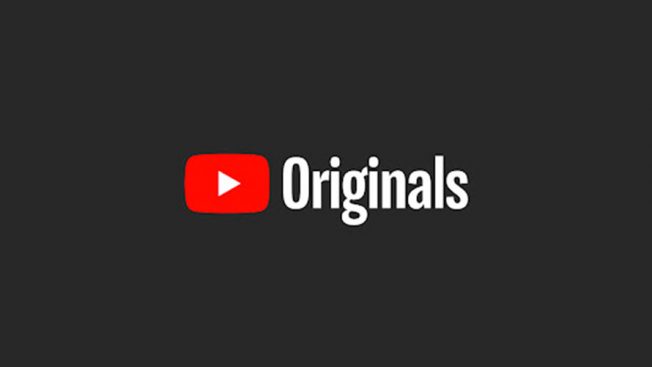Mark your calendar for Mediaweek, October 29-30 in New York City. We’ll unpack the biggest shifts shaping the future of media—from tv to retail media to tech—and how marketers can prep to stay ahead. Register with early-bird rates before sale ends!
When YouTube announced that they’d be dropping the paywall from many of their Originals, they noted that it was to “make our YouTube Originals ad-supported to meet the growing demand of a more global fanbase.” In other words, more fans want to watch Originals for free, which means more advertising opportunities for brands.
YouTube is capitalizing on a huge growth opportunity. The IAB states that “56 percent of consumers TV’s are now IP-connected,” and “54 percent of those viewers are now spending more time watching non-linear content, including digital video.” EMarketer notes that ad spending is lagging behind the fast consumer adoption, which leaves a window of opportunity for YouTube to make it easier for brands to figure out how to spend.
While this new opportunity appears best suited to brand advertising, this is emerging and exciting territory for YouTube as well, considering the potential complements of multiple devices and user-generated show-related content. Test phase and early-adopting brands will have the chance to actively shape an offering that opens up a lot of new multi-channel advertising strategies.
State your preference on Google Preferred
YouTube mentioned that they’re likely going to offer sponsorships up-front through Google Preferred, which is much more similar to a TV advertising scenario than a highly fragmented programmatic targeting scenario. From sponsorships to highly orchestrated advertising sequences, Google Preferred should be seen as a gateway to a custom approach.
Brands will need to take greater consideration into the content itself, not just the audience. It will be worth it to be more tactical in what kinds of ads (both in formatting and goals) are shown to match with the style and tone of the content. Other stipulations, like frequency, matter a lot more when a brand has someone’s attention for so long.
Brands should also take a more active media buying role in certain high-performing programs to either only show their ads or limit other ads while emphasizing their own, much like negotiations that are the norm on TV. Brands must make sure that Google enables enough customizations like these to warrant the costly investment.
Plan for bigger screens
Brands should start paying greater attention to which devices are used to watch Originals programming. While mobile has been king on YouTube for several years, longer programming is more fun to watch on bigger screens with better quality. Titles like Origin will likely be enjoyed on a massive 4K TV screen rather than mobile devices if the viewer has one. This might change the way YouTube ads are viewed; perhaps viewers are multitasking during commercials, the way they do for regular TV.
Brands looking to invest should study new viewing habits, as this type of VOD on the big screen behavior is only set to grow. It’s possible, for example, that multichannel campaigns that include a Twitter campaign or even an app make sense for Originals programming once YouTube is moved to the big screen and the small screen is freed up for other simultaneous activity.
Re-examine other core YouTube strategies
Originals programming will be longer duration, appointment-based and big screen consumed, which isn’t a great match for the thousands of brands that rely on YouTube for direct response campaigns. Long-form content works against the likelihood of down-funnel consumer actions.
Considering how invested audiences will likely be in returning to their shows, YouTube standbys like CTA overlays and Trueview for Action may not be very successful here. The last thing someone watching their favorite show will likely want to do is engage in off-screen distractions. What’s more, brands will want to review their options to target user-generated content related to the show. Options like reaction videos, episode reviews and alternate endings are likely to attract the same audience.
Stay tuned
YouTube will likely fine tune their advertising approach on Originals over time. Google typically takes two approaches to new product testing: upfront Google partners participate in closed alpha testing or using beta testing as a soft launch where brands have to hustle their reps to try the product out. Either way, brands getting involved and vocal is impactful. The input of early participants can be seen across many of their offerings. YouTube Director Mix (dynamic creative customization) and TrueView for Action (a direct response product) both changed substantially as a result of brand input. The former refined the number of ad variations the product put out while the latter resulted in a realization that the down-funnel nature of the TV 4A product required involvement of others in the brand’s marketing department (i.e., for conversion pixel placing, etc.).
For Originals specifically, direct response advertisers might encounter an issue caused by longer appointment big screen viewing, and it’s as of yet unclear whether YouTube is trying to develop a specific Originals ad product or something more general that’s open auction. Feedback will shape their approach.
It’s certain that YouTube will be balancing their revenue potential with the requests they get from their advertisers, so it’s important that brands voice their opinions clearly. This new opportunity shouldn’t be taken lightly. Brands get access to premium programming and millions of viewers; taking a hands-on approach is the key to long-term success.








